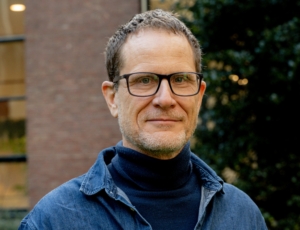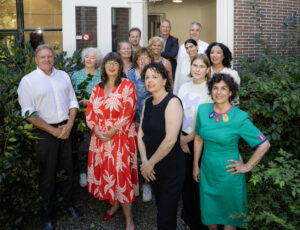The human brain will be the central topic in the last seminar of the year, on Thursday 16 December 2010. Niels Schiller, NIAS Fellow 2010/11, will talk about language processing, and Eveline Crone, Brain and Development Lab (Leiden University), will present the changes in brain functions during child and adolescent development.
Language Processing
Schiller will give a brief overview of how speakers process language in the brain. He will illustrate this process with a recently conducted experimental study using two different and complementary methods of cognitive neuroscience, that is, event related brain potentials (ERPs) and functional magnetic resonance imaging (fMRI).
When we communicate, our main goal is to convey meaning, and morphemes are the smallest meaningful units in a given language. Consider the word klokhuis in Dutch, which consists of two morphemes: klok (“clock”) and huis (“house”). The meaning of klokhuis is not transparent, but is opaque as it means “apple core”.
Looking at speech errors, there is evidence that we represent morphemes separately in our mental lexicon. However, when Dutch people process the word klokhuis, do they access the individual morphemes klok and huis? To access the meaning of klokhuis, activating the individual morphemes would not help – it might even hinder accessing the meaning of the compound. Schiller will present ERP and fMRI data that are able to answer the issue of whether or not speakers activate individual morphemes during language processing and speech planning. This data can furthermore distinguish morphological from semantic (meaning) and phonological (sound) processing.
Contributions to Child and Adolescent Development
Crone will show that brain development should be examined using a window of flexibility that allows for a relative imbalance between brain regions important for control and that affect regulation. Cognitive control is important for a range of abilities, including cognitive, emotional and social reasoning. fMRI shows how changes in brain function are related to changes in cognitive control over the course of child and adolescent development. These changes were tested using three approaches:
(1) The flexibility of the cognitive control system in childhood using training and longitudinal analyses.
(2) The balance between limbic and prefrontal cortex contributions in adolescence using affective reasoning tasks.
(3) The contributions of developing brain regions to intention understanding in social reasoning using interaction paradigms.
Together, these studies provide a multi-disciplinary approach towards understanding the complex changes which occur in brain and behaviour during childhood and adolescence.



